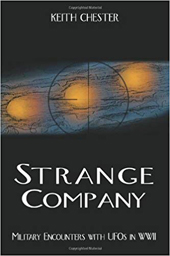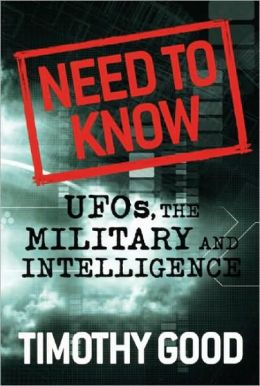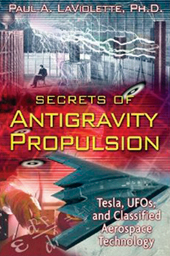Description
By Keith Chester
Mankind had reached a threshold in the forth decade of the 20th century. There were unprecedented scientific and technological achievements, but despite such progress, humanity was entering one of its darkest chapters. World War II would grip the world with terror for six years.
During that time military personnel reported seeing numerous highly unconventional aircraft in all theaters of operation. These objects had extraordinary flight performance capabilities, came in a variety of shapes, sizes, and colors, and were able to travel at extraordinary speeds and avoid radar detection.
Strange Company is the first in-depth account of unconventional aircraft observed and reported by the military during World War II. It includes the reactions by military commands, their viewpoints, and theories as they struggled to make sense of the observations. Strange Company presents one of the greatest wartime mysteries, one that has been shrouded in ignorance for more than sixty years. And it suggests that while an immense 20th-century war was raging on Earth, there appeared to be someone, or something, from somewhere else, watching us.
Softcover, 320 pages.
About the Author
Keith Chester is an artist and filmmaker living in Bel Air, Maryland. After witnessing a daytime UFO in the mid-1960s, he became fascinated with the phenomenon. By the late 1980s, he was devoting considerable time to research on UFOs.
Reviews
“In this eye-opening, thoroughly researched book, bristling with surprising revelations, Keith Chester challenges decades of conventional wisdom about the UFO phenomenon.” — Jerome Clark
“It’s a huge contribution to the field.” — Tim Binnall, Binnall of America
“I was reading a new book the other day, Strange Company by Keith Chester, and realized a couple of things. First, we’re going to have to change the history of the UFO phenomenon. Until this book came out, we all dated the ‘modern’ era from the Kenneth Arnold sighting of June 24, 1947. It is now clear that the modern era began during the Second World War.” — Kevin Randle, A Different Perspective
“Strange Company makes clear for the first time,just how frequent the wartime sightings were and the concern they created within Allied military, who seriously feared they could be advanced secret weapons developed by the Axis forces. This gave rise to the persistent myth that foo-fighters were highly advanced flying saucers created by Nazi scientists, whose designs were later captured and developed in secrecy by the Americans. The proponents of this bizarre theory will find little to support their claims in this sensible, sober book which largely sticks to primary source material… Possibly the most intriguing revelation in this book are the results of Keith Chester’s inquiries at the US National Archives, which threw up references to a joint US and British foo-fighter investigation later in the war, and a direct link with post-war UFO studies by the intelligence services. Most important of all was the involvement in wartime investigations of Bob Robertson, the US physicist who presided over a scientific panel which reviewed the UFO evidence for the CIA in 1953…A must-read for ufologists of all persuasions.” — Dr. David Clarke, Fortean Times
“… An extensive, exceptionally documented, and in-depth account of UFOs observed and reported by the military during World War II. … Chester has indeed produced a ufological gem.” — John Zupansic, Fate
“Packed with never-before-seen documentation, witness testimony, and reams of new data, Strange Company is likely to be one of the most talked about UFO books of this year. …” — UFO Magazine
“As I began reading Strange Company, I wondered whether we would be treated with a series of stories of indistinct lights, which, I confess, was my concept of the foo fighters of World War II. … But we read of solid objects with sharply defined edges moving the foo fighters from the realm of ionized air and other natural phenomena into something that is solid and probably extraterrestrial. … Chester gives us the documents created at the time by intelligence officers trained in interrogation techniques and whose job it was to understand all that the flight crews were telling them because lives hung in the balance … This book is a unique history of the Second World War … What Strange Company does quite well is move the modern era of the UFO from June 1947 when Kenneth Arnold’s report hit the newspaper to World War II. It is clear that these sightings, considered at the time to be classified information and therefore weren’t widely discussed, are the beginning of the modern [UFO] era.” — Kevin Randle, Journal of Scientific Exploration
EXCERPT from Chapter 16:
New Guinea was an early prize for the Japanese army during the early war years, but by July 1944, after brutal to-the-last-man fighting, U.S. Marines recaptured it. By mid-March 1945, New Guinea was under Allied control and considered fairly safe. Close by, after suffering from its intense battle at Iwo Jima, the USS New York was returning to combat duty. Escorted by two destroyers, it set sail to join up with the Seventh Fleet.
The weather that day was sunny and clear. Around 1300 hours general quarters sounded, electrifying the calming nature of the warm sea air. Alert, Corporal Donald Pratt and his crewmembers prepared for an attack by Japanese forces, possibly suicide aircraft. Pratt was a 40mm gunner. He was ready, waiting for the order to fire. Nerves tense, he watched, but the sky was clear. No Japanese planes appeared.
On the New York’s radar, things were different. The radar screen was picking up a single blip. It had appeared out of thin air. Just seconds later, the blip was in view. Cpl. Pratt watched as the object hovered motionless, almost directly over the battleship. Captain K.C. Christian was watching through his binoculars, as were approximately 2,000 other navy crewmen, some with their own binoculars.
The object was “silver in color,” “very shiny” and “did not change colors,” Pratt said. “It was much larger than the brightest star would be, but smaller than a full moon.” Quietly, it continued hovering above them, just matching the New York’s speed and course.
For 30 minutes, the New York and her two escorts anxiously braced themselves for something to happen. The strange object did nothing, but its presence was too much for the naval vessels to stand by and do nothing. Was this a Japanese secret weapon waiting for the right time to strike? Or was it waiting for more of them to show up and attack in number? Captain Christian did not wait to find out. There was no need to receive damage first and then respond, so he ordered a first strike.
Two of the New York’s three-inch antiaircraft guns cut loose on the object, sending a hail of lead arching high into the air. But the object did not move or appear affected by the gunfire. Since it was useless and a waste of ammo, Captain Christian ordered his guns silent. Within seconds of their cease-fire, the object “climbed up at a fantastic rate of speed until it was out of sight, and off the radar scope.” Corporal Pratt said “everyone aboard the ship was stunned by this; they had never seen anything like it.”
The general quarters sounded, and the ships were again alone at sea. The men discussed the incident for days, trying to make sense of what they saw. “Anyhow, we knew, after watching it for a few minutes that it was not any type of plane because our ship was only traveling at around twelve knots,” Pratt explained. “A plane could not travel that slowly without stalling the engine and dropping into the ocean. It was too sunny and bright that day to be a star, and it was not a balloon … not in the middle of the Pacific. We didn’t know what it was. …”
CONTENTS
Foreword by Jerome Clark
Introduction
1. Among The War Clouds
2. From War of the Worlds, To A World At War
3. Over Coasts and Valleys
4. Which Phenomenon?
5. “Neither a Dream, Nor a Buck Rogers Invention”
6. Silver Discs, Pie-Plates, and the Light
7. Rockets, Airships, and Balloons
8. ATI and CIOS
9. Calling Dr. Griggs
10, Leet, Nolan, and Intruder Schlueter
11. Smokey’s Foo Fighter
12. Bob Wilson Gets His Scoop
13. Foo or Phoo?
14. “Scientists Say Pooh …”
15. Air Ministry at a Loss
16. Pacific Balls of Fire
17. “Circles of Light”
18. The Secrets Flood In
19. Multiple Choice
20. The Skies Stay Busy
21. Dr. Griggs In Japan
22. And So…
Epilogue: Postwar Thoughts
Appendix: Dr. Samuel Goudsmit and ALSOS
Acknowledgements
Glossary
Notes
Documents
Sightings Index
Index






